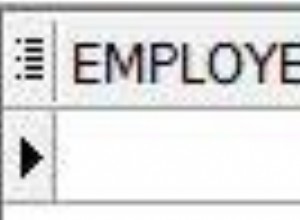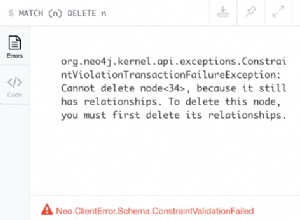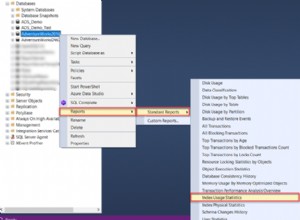Pour travailler avec un curseur en PHP, trois étapes supplémentaires sont nécessaires, par rapport à l'accès direct aux lignes à partir d'un SELECT déclaration.
- La première étape consiste à préparer une ressource de curseur en PHP à l'aide de
oci_new_cursor()fonction, que vous utilisez ensuite pour vous lier au paramètre approprié. - La deuxième étape consiste à ajouter un paramètre sur
oci_bind_by_name()fonction - La troisième étape, après avoir exécuté l'instruction SQL habituelle, appelle
oci_execute()sur la ressource curseur.
Le code :
//Connection does not change
$db = "(DESCRIPTION=(ADDRESS_LIST = (ADDRESS = (PROTOCOL = TCP)(HOST = JXYX.com)(PORT = 1521)))(CONNECT_DATA=(SID=DHSJKS)))";
$conn = ocilogon("XXXXXX","XXXXXXXX",$db);
//Request does not change
$sql = 'BEGIN SP_GET_MY_DATA(:POP, :SEG, :DUR, :VIEW, :PAGE, :OUTPUT_CUR); END;';
//Statement does not change
$stmt = oci_parse($conn,$sql);
oci_bind_by_name($stmt,':POP',$pop);
oci_bind_by_name($stmt,':SEG',$seg);
oci_bind_by_name($stmt,':DUR',$dur);
oci_bind_by_name($stmt,':VIEW',$view);
oci_bind_by_name($stmt,':PAGE',$page);
//But BEFORE statement, Create your cursor
$cursor = oci_new_cursor($conn)
// On your code add the latest parameter to bind the cursor resource to the Oracle argument
oci_bind_by_name($stmt,":OUTPUT_CUR", $cursor,-1,OCI_B_CURSOR);
// Execute the statement as in your first try
oci_execute($stmt);
// and now, execute the cursor
oci_execute($cursor);
// Use OCIFetchinto in the same way as you would with SELECT
while ($data = oci_fetch_assoc($cursor, OCI_RETURN_LOBS )) {
print_r($data);
}
Je ne parle pas très bien Oracle (et l'anglais) donc vous devriez lire ce tutoriel . Il y a un exemple intéressant, regardez les procédures stockées et curseurs de référence chapitre !
J'espère que cela vous aidera !




